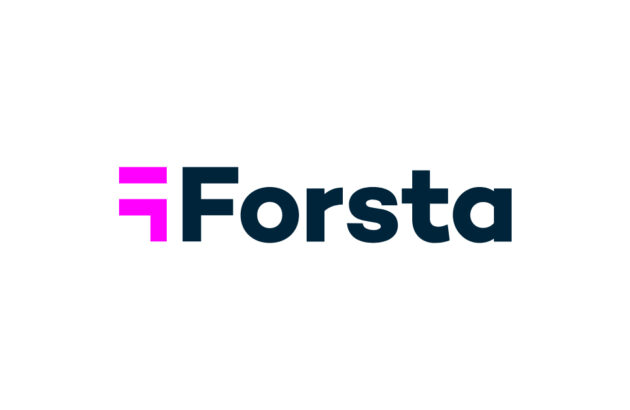How to measure brand awareness

So, you think people know your brand? Whether you’re full of confidence or convinced you’re about to fade into the background, there’s only one way to know for sure – and that’s by measuring your brand awareness.
If you don’t know where to start, you’ve come to the right place. By the end of this blog, you’ll understand the merits of measuring brand awareness, ten ways to actually do it, what to measure, and how to use all of that lovely data you’ve collected. You’ll also get an insight into the huge business benefits of using targeted software to help you on your way.
So, what are we waiting for? Let’s go!
Why measure brand awareness?
Measuring brand awareness is a sure-fire way to understand your place in the market from the perspective of the people who matter: your target customers. When you measure brand awareness, you get the most incredible insight into what your brand is doing well, and where you might need to pull your socks up.
Look, there’s no point burying your head in the sand. If something’s not working, you wanna know, right?
There’s so much competition in just about every industry, sector, and sub-sector out there, so making sure that people know who you are, what you do, and how you can make their lives better is the only way you’re going to make a name for yourself. Literally. People need to know your name!
But can’t you just look at how many twitter followers you have?
Actually, no. Brand awareness is about more than just your social media following (although this is important, too). You need to know that your brand is getting in front of the right people – and that when it does, it’s giving the right message. You’re looking to understand the human experience of your brand, from start to finish.
If you still need convincing, you might want to check out our complete guide to brand awareness.
10 ways to measure brand awareness
When it comes to tried-and-tested methods for measuring brand awareness, these are ten of the best.
- Monitor web traffic
How many people are checking out your website? If your numbers are high, chances are your brand awareness levels are, too. But you need to monitor two types of visitors: those who get to you by typing in your URL (your direct traffic), and those who find your site through social media, ads and SEO. Both are incredibly valuable, but the distinction is an important one. Direct traffic shows how many people already know about your brand; web traffic that comes through other avenues (such as ads) suggests your marketing efforts are doing the trick. - Track social media metrics
Okay, we said it’s not about your follower count, but it is a little bit about that. While you can’t measure brand awareness in its entirety through social media metrics alone, gauging how many followers – as well as retweets, shares, comments and likes – you have across your brand’s social media accounts is a fairly good indicator of awareness. - Carry out a brand awareness survey
Brand awareness surveys can be worth their weight in gold – if you know how to use them. Before you get going, pin down precisely what outcome you’re after: do you want to know how familiar people are with your brand, or are you more interested in how they feel when they hear your name? Online surveys targeting your ideal audience can return the most valuable data, but give some thought to whether you want to ask aided questions (‘which of these drum manufacturers do you recognise from this list?’), or unaided questions (‘which is the first drum manufacturer that springs to mind?’). - Put a social ear to the ground
Social listening lets you hear what people are saying behind your back (and to their entire networks) in the most organic way possible. Instead of setting up your target audience with potentially biased questions, social listening tools allow you to refine your own search, filter out anything irrelevant, and soak in the sentiment surrounding your brand. - Set up Google alerts
Much like social listing, Google alerts lets you keep track of every time your brand name is mentioned online. You’ll be notified with a summary of all the places your name is popping up, allowing you to assess your own growing (or waning) popularity. But one word of warning: if your brand name is fairly generic, this might not be the best option for you. - Consider search volume data
Google Adwords Keyword Planner, along with Google Trends, allows you to monitor how many searches your brand name is getting online. An upwards trend in search volume suggests that your brand awareness is increasing (hooray!), while a downwards spiral can give you a gentle nudge that something’s not working. But again, this method isn’t so great for brands with generic words as names. - Examine content performance
The content your brand puts into the world is not only great for marketing: it also offers you a solid brand awareness measurement. Looking at how many people have viewed and engaged with your blogs, videos, podcasts and posts gives a good indication of how effective your brand awareness strategies actually are. - Measure your share of voice and impressions
Measuring your own brand awareness is crucial, but it’s even more insightful when you look at it alongside your competitors. If your brand awareness has seen a 30% boost, but competitor brand awareness has risen by 60%, something’s going wrong. Looking at your share of voice and share of impressions allows you to benchmark your own brand performance. - Analyse referral traffic
When brands link to your website, it puts you in front of a bigger audience; it’s also a really great endorsement. Tracking referral links through Google Analytics then will help you to see how popular you really are. Just be mindful of high bounce rates, and make sure that any data you’re taking into account generates real traffic. - Embrace brand tracking software
You’ve got a job to do, and unless you work for a research agency, that job probably isn’t to sit and measure brand awareness. Fortunately, you don’t need to pay exorbitant agency fees anymore, or do all the hard work yourself, because tracking has evolved. Through brand tracking software, you can access the data that’s already there – all the way from brand sentiment, through to NPS.
Best metrics to measure brand awareness
Right then, you’re ready to start measuring your brand awareness with our ten tactics above – but what metrics should you be looking at? Try these three out for size…
- Mentions: Your volume of mentions is a super important metric, because it lets you see how many times your brand name has been mentioned online, how many conversations your brand has been a part of, and whether you’re on an upward or downward trajectory in terms of your online presence. But better still, you can even track brand talk that doesn’t come with a #hashtag or @mention, as well as the conversations that happen beyond your own brand channels. And that’s where all the juicy stuff is.
- Reach: Your reach shows just how many people your brand could be under the nose of through those mentions and (tagged or untagged) conversations. Reach is calculated by looking at the number of followers of each person who mentions your brand – because, like it or not, an influencer with 500k followers will generate far more brand awareness than your best mate with only 500 followers.
- Engagement: As we covered with your content performance above, engagement can be a really useful metric to track. It might not be as concrete as site visitors or social call-outs, but if people are actively engaging with content from your brand, in whatever form, it means that something you’re saying is resonating and making an impact.
How to use data gathered from measuring brand awareness
Once you’ve collected all of that lovely rich data, what do you actually do with it? Well, that depends on your results.
- If your website traffic is low, you probably need to invest in SEO (Search Engine Optimisation) to help Google find your site when someone searches for a related key word. SEO is always a worthwhile investment, but if the metrics show your site isn’t getting seen, you’ll be left in no doubt.
- If a few pieces of your content are performing particularly well, and others not so much, this should help to inform your future marketing strategy. Why did those pieces do so well? What was different about them? Who engaged with them? How can you replicate that level of engagement? Understanding what content your customers want to see is key for growing brand awareness.
- If a brand awareness survey shows that people don’t understand what your brand stands for, you’ll know that you’re not communicating your vision clearly enough, and possibly failing to live your values. That gives you something really concrete to act on: your brand needs to live and breathe its ethos, so if that’s not reaching your customers, it’s time for a strategic rethink!
- If your online mentions spike at different periods of time, do a deep dive on what else is going on at the time. Have you launched a new product? Are you running a competition? Or has someone made a complaint and you’re actually getting negative attention? It’s crucial to stay on top of your online presence, tune in to what’s going down well with your customers, and quickly diffuse any negative mentions through empathetic actions.
How can Forsta help?
It pays to listen, and no one understands that better than us.
Remember way back in our ‘measuring brand awareness’ section, all those sentences ago, when we said you didn’t have to do all the hard work yourself, or pay exorbitant agency fees? That instead, you could chuck the challenge at some savvy software, and save yourself the headache?
Well, here it is: Forsta’s brilliantly brilliant Brand Experience Software.
Why is it so brilliant, we hear you ask? Well, it cuts out the guesswork, tests your ads for you, lets you hear from everyone (even your mortal enemies), and shows you how to get happier – and more plentiful – customers. It gives you the data you need, then tells you what to do with it.
Headache, sorted.
Overwhelmed? Don’t despair
It can feel like a lot, but so much of brand awareness really is in your control. With the right tools, the right knowledge, and the right approach, you can work on measuring, understanding, and ultimately boosting your brand awareness.
And when you reach that point? It’s totally worth it.
Related stories
Research HX
Many feedback programs measure Net Promoter Score movements, but few can reveal the “why” of customer behavior. Forsta’s HX Benchmarks puts performance in context so you can understand what great experiences look like for your customers. Learn more about the human-centered intelligence you need to outperform the market.

AI and the new era of customer experience: Insights for 2025 and beyond
AI and the new era of customer experience: Insights for 2025 and beyond Webinar synopsis: In today’s fast-paced digital landscape, customer experience (CX) is the ultimate differentiator—and AI is rewriting the playbook for how businesses connect with their customers. Tune in to an engaging session that blends cutting-edge thought leadership with actionable strategies to elevate […]

Integration: the new frontier of insights for research HX
Integration: the new frontier of insights for research HX Webinar synopsis: Discover the faster, smarter and more accurate way to research with Research HX. Gone are the days of sequential processes skipping between platforms. Parallel workflows, integrated steps and AI enhancements to the tools you use daily. Related resources

Learn more about our industry leading platform
FORSTA NEWSLETTER
Get industry insights that matter,
delivered direct to your inbox
We collect this information to send you free content, offers, and product updates. Visit our recently updated privacy policy for details on how we protect and manage your submitted data.